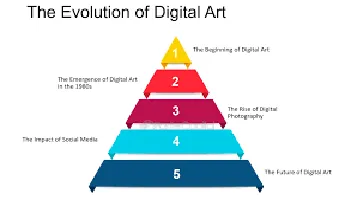A Timeless Legacy of Elegance: An In-Depth Review of Dior
Christian Dior, founded in 1946 by the iconic French designer Christian Dior, is a globally renowned luxury fashion house known for its elegant and sophisticated designs. With its headquarters in Paris, Dior has been at the forefront of high fashion for decades, revolutionizing women's fashion with the introduction of the "New Look" in 1947. This collection redefined post-war femininity with its cinched waists and voluminous skirts, establishing Dior as a major influence in the fashion world. Over the years, the brand has expanded its offerings to include haute couture, ready-to-wear, accessories, fragrances, and cosmetics. Under the creative direction of various visionary designers, Dior continues to blend innovation with its rich heritage, maintaining its status as a symbol of luxury and timeless style.

When one speaks of haute couture, luxury, and timeless elegance, the name Christian Dior inevitably surfaces. Since its inception in 1946, the house of Dior has been an epitome of sophistication and innovation in the fashion industry. From its iconic "New Look" in the late 1940s to its modern-day collections, Dior has consistently redefined fashion while maintaining a reverence for its rich heritage. This review delves into the multifaceted allure of Dior, exploring its history, design philosophy, influence, and enduring appeal.
A Glorious History
Christian Dior founded his eponymous label in Paris, during a time when the world was recovering from the ravages of World War II. The debut collection in 1947, famously known as the "New Look," was a radical departure from the austere wartime fashion of padded shoulders and boxy silhouettes. Dior introduced an hourglass figure with cinched waists, full skirts, and opulent fabrics, celebrating femininity in a way that was both revolutionary and nostalgic. This collection not only catapulted Dior to global fame but also revitalized the Parisian fashion scene.
Christian Dior himself was at the helm until his untimely death in 1957, but the house has since seen a series of illustrious designers, including Yves Saint Laurent, Marc Bohan, Gianfranco Ferré, John Galliano, Raf Simons, and currently, Maria Grazia Chiuri. Each designer has brought their unique vision to Dior, yet all have respected the brand’s core values of elegance, craftsmanship, and innovation.
Design Philosophy
Dior’s design philosophy can be encapsulated in a single word: elegance. Whether it’s ready-to-wear, haute couture, accessories, or fragrance, every Dior creation exudes a sense of refined sophistication. The brand’s commitment to craftsmanship is evident in its meticulous attention to detail, from the hand-sewn seams of a couture gown to the intricate embroidery on a handbag.
Maria Grazia Chiuri, the first female creative director of Dior, has brought a modern, feminist sensibility to the brand. Her collections often incorporate elements of art and literature, and she is known for her efforts to make fashion more inclusive and socially conscious. Chiuri's designs maintain the house’s traditional elegance but also push boundaries, making Dior relevant for a new generation.
Influence and Innovations
Dior’s influence on fashion is immeasurable. The "New Look" alone changed the trajectory of women’s fashion, steering it away from wartime austerity toward a more glamorous and opulent style. Over the decades, Dior has continued to be at the forefront of fashion innovation. John Galliano’s tenure was marked by theatricality and bold, avant-garde designs, while Raf Simons brought a minimalist, modernist approach to the brand.
Dior is also a pioneer in the realm of fashion marketing and branding. The house was among the first to create a comprehensive lifestyle brand, extending its luxury ethos to accessories, beauty products, and even home décor. The Dior logo itself has become a symbol of status and luxury, instantly recognizable and universally coveted.
Enduring Appeal
What sets Dior apart from other luxury brands is its ability to blend tradition with innovation seamlessly. While it honors its heritage, Dior is never static. The brand continually evolves, introducing new materials, techniques, and designs that capture the zeitgeist while remaining timeless.
The brand’s commitment to sustainability is another aspect of its enduring appeal. In recent years, Dior has taken significant steps to reduce its environmental impact, from using eco-friendly materials to implementing sustainable practices in its production processes. This commitment resonates with today’s consumers, who are increasingly conscious of the environmental and ethical implications of their purchases.
Dior's fragrances, particularly the iconic "Miss Dior" and "J'adore," have also contributed to its lasting allure. These scents are more than just perfumes; they are olfactory embodiments of the brand’s elegance and sophistication. Each fragrance is crafted with the same attention to detail as its couture, making them timeless classics in their own right.
Conclusion
In a world where fashion trends come and go, Dior remains a beacon of timeless elegance and innovative design. Its rich history, commitment to craftsmanship, and ability to evolve with the times make it a unique and enduring presence in the fashion industry. Whether it's a couture gown, a handbag, or a bottle of perfume, a Dior creation is not just an item of luxury; it is a piece of art, a testament to the brand’s unwavering dedication to beauty and elegance. As Dior continues to evolve under the visionary leadership of Maria Grazia Chiuri, it is clear that the house will remain a symbol of sophistication and innovation for generations to come.






